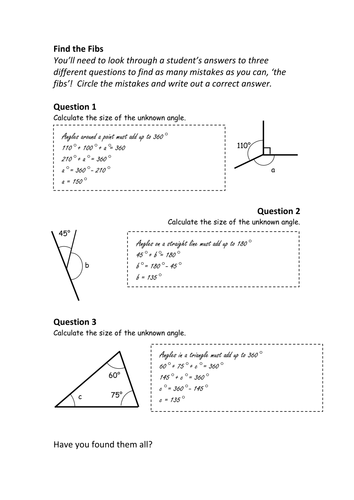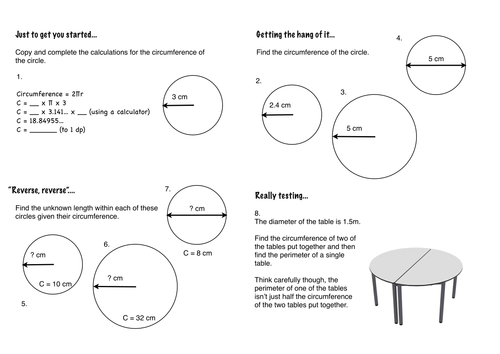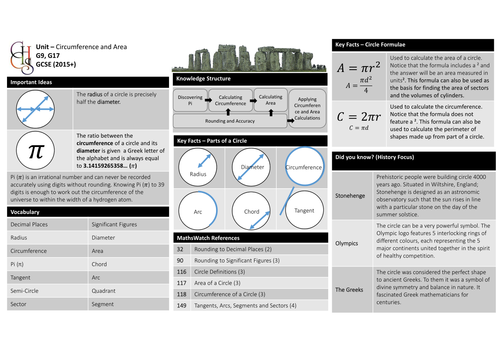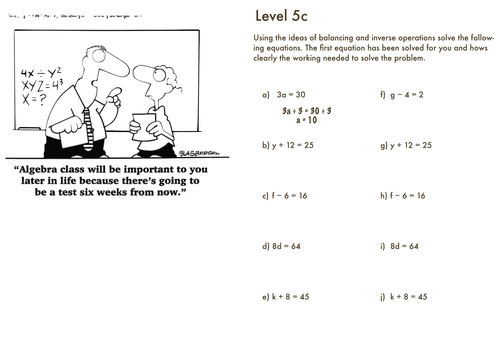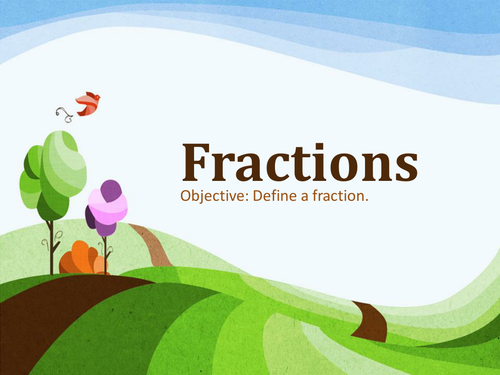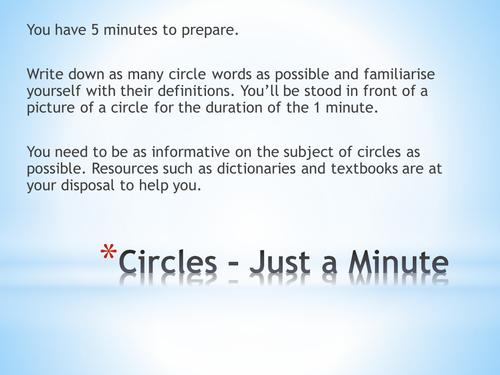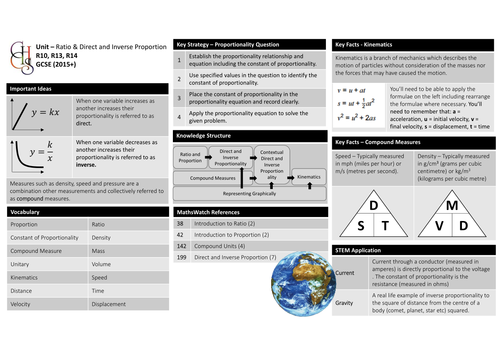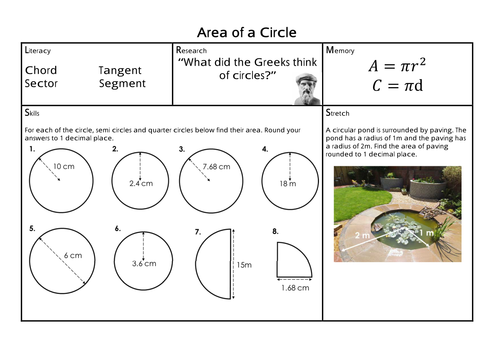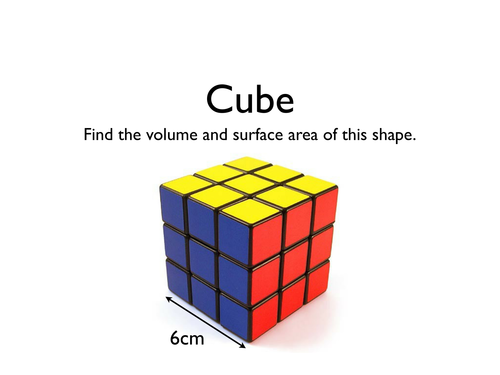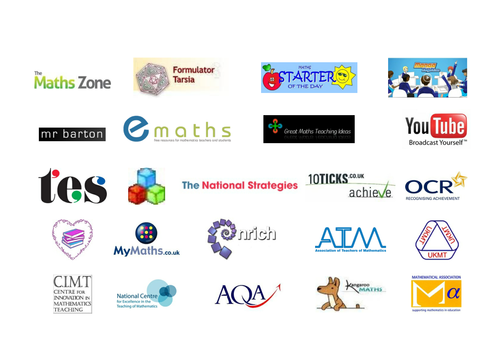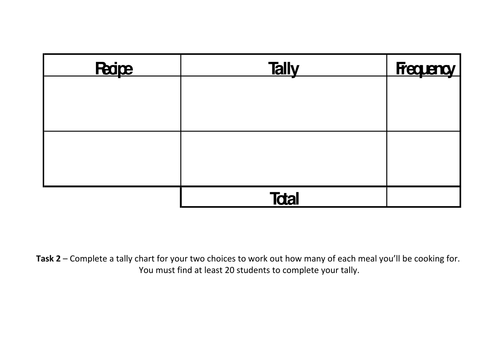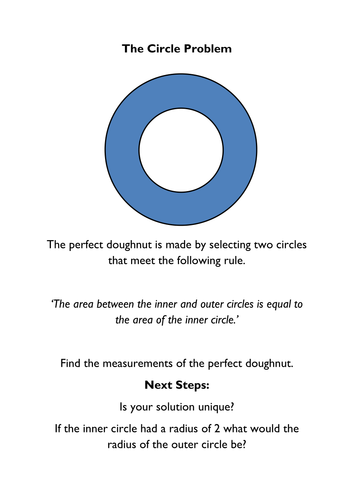
75Uploads
304k+Views
246k+Downloads
Mathematics

Find the Fib - KS3 Angle Problems Worksheet
In this word document worksheet find the two mistakes hidden in 3 questions regarding angles around a point, a line and a triangle.

KS3 Maths algebra solving equation cards
'I Think of A Number Cards' Designed to be 4 distinct sets of questions cards this resource is developed as an introduction to solving equations. It original design is to go alongside a lesson developing the idea of inverse to then be taken on to the solution of formal algebra.
Set 1-Addition and Subtraction (1 Stage)
Set 2 -Multiplication and Division (1 Stage)
Set 3 - Multiplication then Addition/Subtraction (2 Stage)
Set 4 - All 4 in any order (2 Stage)
Second version doesn't provide answers.

Knowledge Organiser - Area and Circumference
Another interpretation of 'Great Maths Ideas' work on knowledge organisers as a way of sharing learning intentions/objectives with students.
Please leave a comment.

Interior Angles
A PPT file support the discovery of interior angle properties of polygon. This is a follow on lesson based around a table with the number of side, number of triangles and interior angle sum columns.
A number of tasks at the end extend the ideas beyond the previous lesson.

KS3 Maths Solving Equations Booklet
Designed for the Level 5 algebra: linear equations objective. The document graduates in difficulty, (differentiated for level 5a, 5b, 5c) and provides an example per level. The document emphasises the idea of balancing and use of inverse.

What is a fraction?
The powerpoint used to create a near pod presentation. Couldn't share the NPP because of TES rules.

Angle Problems
Solve angle problems.
Print on paper, cut up, students place their answer on the back, replace in the pile, another student answers and peer assesses the other answers on the back of the question.

Area of a Segment
I couldn't find a good resource on area of a segment so I spent some time developing one.
The idea is to provide students with 5 breadcrumbs that then lead to the final outcome, namely solving segment area problems.
The powerpoint has 5 steps that provide practice of all the assumed knowledge and this then enables student to guess the objective of the lesson and subsequently solve two A* questions taken from the &'Bland&'; question papers ( A* questions, Paper 2) which couldn't be linked.

Knowledge Organiser - Direct and Inverse Proportion
My first attempt at a knowledge organiser for a top set Year 10 group tackling the a two week module on the new GCSE on proportionality. The idea comes from: http://www.greatmathsteachingideas.com/2016/01/17/knowledge-organisers-better-than-learning-objectives-and-great-for-building-retention/
The idea is to provide this to the students as a clear framework for the learning that will take place hoping that this is more impactful that success criteria and lesson objectives.
You'll also find a blend space lesson here: https://www.tes.com/lessons/hlLoaruDcmplVA/direct-and-inverse-proportion
All feedback welcome.

Probability - Expected Value
An opportunity to explore expected value through two way tables ( a potential examination combination). You'll find a modelling question, open task to explore, investigate and question as well as a extension question to really put the mathematics to good use. Enjoy!

Area of a Circle - PRET Homework
An interpretation of Maths PRET homework (see http://prethomework.weebly.com/about.html for details) on the theme of area of a circle.

Histograms Activities
A couple of activities to support lessons involving histograms. One a learner bingo and the other a True or False activity.

Transformations (with a focus on Translation)
A few resources I created a few years ago. They adapt the standard unit resources.

Inequalities Mini-Guide
A self contained document originally designed for varying tasks per table completed on a rotation basis. There are information sheets and questions sheets.
It has however since been used to create a mini booklet for individual work.

Volume and Surface Area Relay
Relay for volume and surface area.
Students apply the formulae provided on the exam paper to the full range of 3D shapes. They also have an opportunity to consider surface area.

School Canteen
Students run a school canteen.
1. They select 2 recipes to produce in their canteen.
2. They survey the class for demand for each dish using a tally chart.
3. They calculate the quantities required for each it recipe item in grams.
4. They round and convert into whole kg units to then cst each item.
5. They calculate profit by calculating total revenue and total cost.
This activity worked well just before Easter as a competitive challeneg completed in pairs with a middle attaining year 7 group.

Area Problems
Three problems designed to get students learning by pursuing answers to big problems, consolidating understanding as they go.

